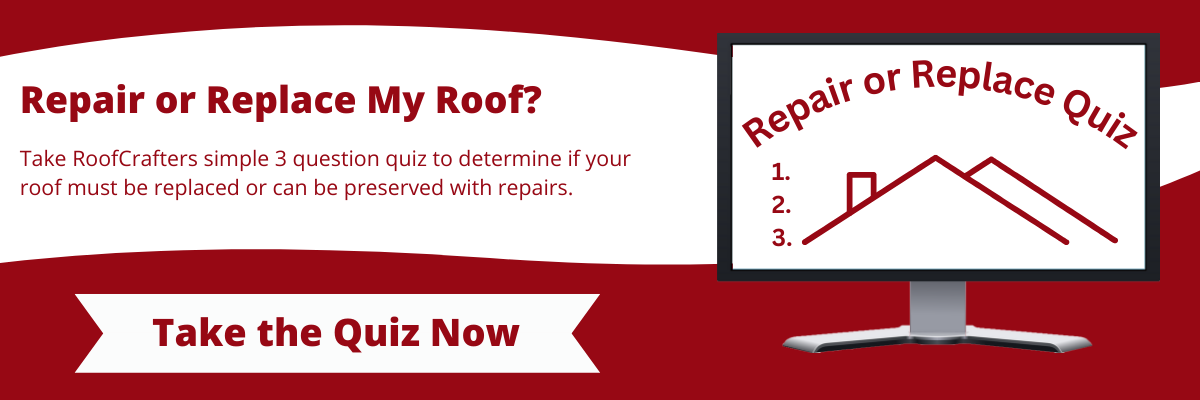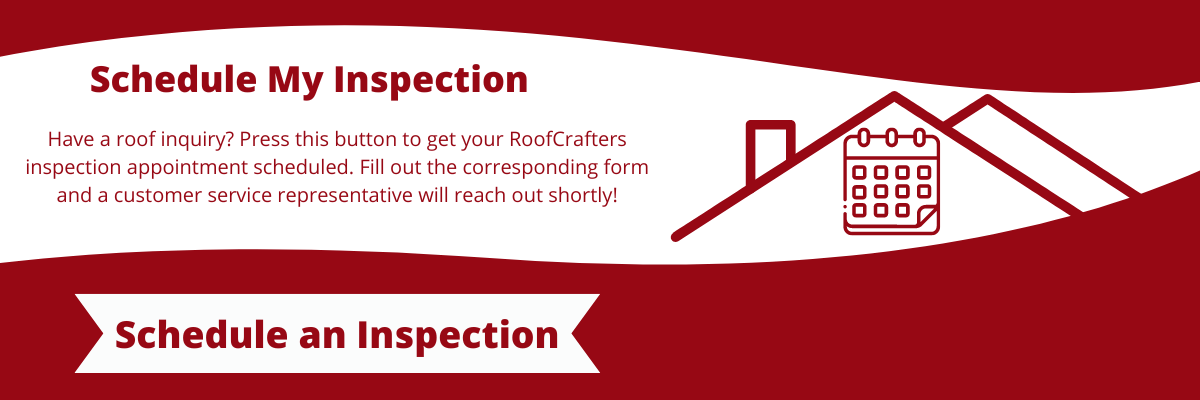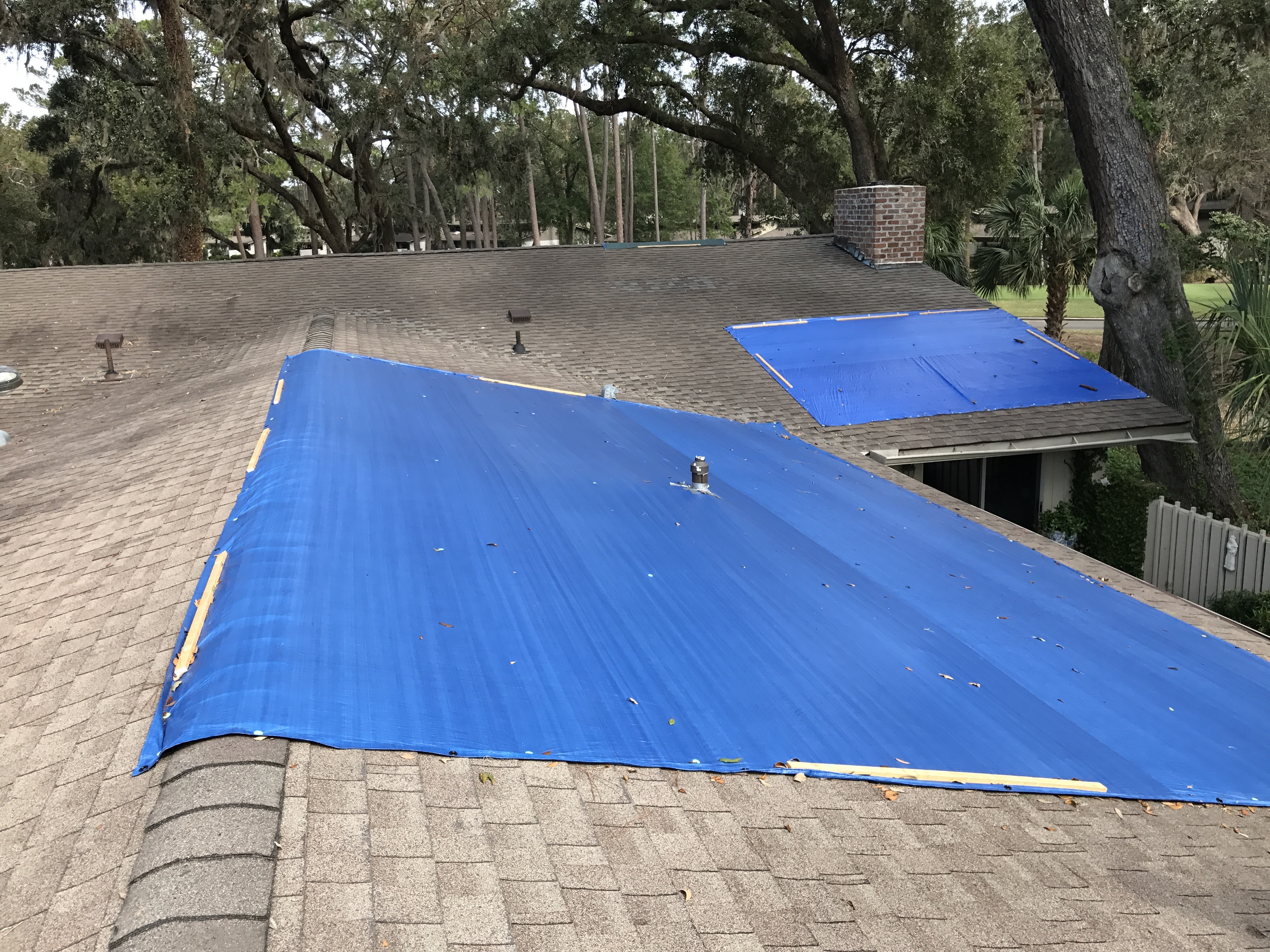
Discovering a roof leak, no matter its size can be a distressing experience for any homeowner. A major leak that leads to a deluge in your living room is an undeniable emergency. It's the smaller, less conspicuous leaks that often go unnoticed or ignored. But, underestimating a minor roof leak can lead to significant problems down the line.
It's a common scenario. A small, seemingly harmless leak is discovered but quickly forgotten or disregarded. This 'out of sight, out of mind' mentality can have serious consequences. Even a tiny crack, first noticed during a routine attic check, can escalate into a major issue. What appears as a trivial drip in January could evolve into extensive water damage by March. "The Hidden Dangers of Small Leaks."
In our 30 years at RoofCrafters, we've seen many different consequences of roof leaks. We have learned from our experience that we should not take any leak lightly. The smallest of leaks can be deceptive. They can even lead to structural damage, mold growth, and a host of other complications if left unaddressed. This is "Why Immediate Action is Crucial."
If you're reading this article, chances are you've spotted a small leak and are weighing its seriousness. You're in the right place to understand the urgency of the situation. In this article, we'll explain why even small leaks need quick attention. We'll discuss the risks they can cause and the steps to prevent future leaks. To keep your home safe from water damage, we'll talk about two things: taking care of your roof and finding small leaks fast.
Let's storm right in!
The Hidden Risks of a Small Roof Leak
Often underestimated, small roof leaks can be deceptively damaging. Their subtlety in onset and progression can lead to significant issues. Some of which may not be immediately plain. It's important to realize how serious even a small leak is for your home's safety.
Progressive Damage from Attic to Living Space
A small leak typically starts in the attic, posing an immediate threat to stored items. That dancing Santa figurine might be the first casualty, but the impact extends far beyond. Over time, a persistent leak can erode wood, leading to more severe leakage. Electrical components, like lights and wiring on the roof, are also at risk. The moisture can compromise paint, causing discoloration and peeling.
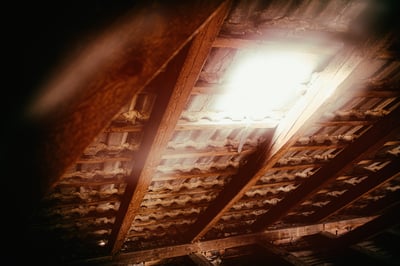
The damage continues to escalate as water infiltrates further into your home. Attic insulation becomes saturated, reducing its effectiveness and leading to increased energy costs. Even more alarming is the potential for mold growth mold. A serious health hazard and a threat to your home's structural integrity.
The Sneaky Nature of Small Leaks
What makes small roof leaks perilous is their ability to cause extensive damage before they're even detected. By the time you notice signs of a leak, it may have already led to considerable wood rot or other structural issues.
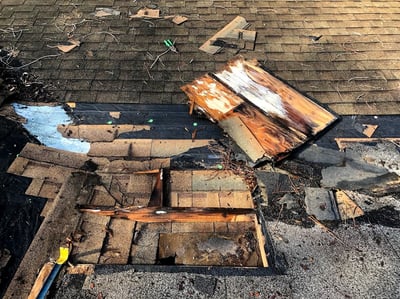
Unlike larger obvious leaks, small ones are challenging to spot and can wreak havoc. they go left unnoticed, causing extensive hidden damage.
Recognizing the Signs
Early detection is key in mitigating the risks associated with small roof leaks. By identifying them early you can avoid the worst of the damage. Here are some telltale signs to watch for:
- Rusted Nails in the Attic: If you find rusting nails in your attic’s ceiling, it's a clear indicator of moisture intrusion from a roof leak.
- Ceiling Spots and Textural Changes: Uneven textures or spots on your ceiling are urgent signs of water seepage. In extreme cases, you might notice sagging, water bubbles, or even sunlight piercing through eroded areas.
- Unwanted Pests: An attic infested with insects or nesting birds is a red flag. It's essential to check the integrity of your windows’ seals and consult a roofer for a potential roof structure issue.
- Mold Growth: Mold thrives in damp, dark environments, making your attic and ceiling prime locations. The presence of mold not only poses health risks but also signals ongoing moisture problems.
In conclusion, a small roof leak may not seem important, but it can cause big problems. It can lead to damage and health risks. Recognizing the signs early and taking swift action is imperative to protect your home and well-being.
Mold. Damp places unexposed to sunlight are perfect for mold growth, making your attic and ceiling the ideal breeding ground. Allergic reactions for many people accompany the musty smell of mold. Not only can mold cause health issues, but it also is detrimental to your home’s structure.
The Escalating Consequences of Ignoring a Small Roof Leak
So many people have the thought. The process starts with them asking, “Is a small roof leak bad?” But then it ends with them saying, “Well, it hasn’t really caused any visible damage, so I’ll get to it later.”
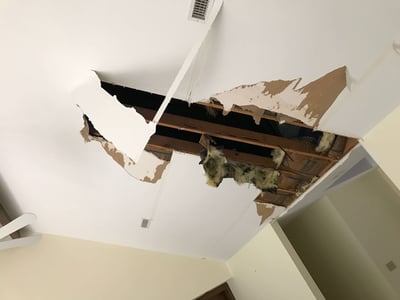
A small roof leak becomes a big one if left unrepaired, eventually causing water to flood your house during a rainstorm and potential electric shocks, fires, and serious structural damage.
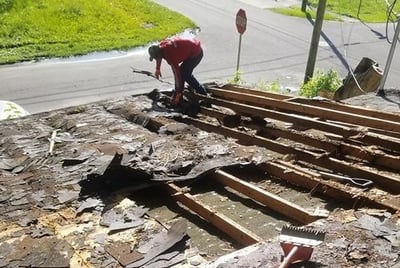
Furthermore, water damages most furniture, clothing, and electrical appliances. Insurance won’t cover you for any damage caused by a leaky roof if you neglected it when the leak was small. We suppose it’s a matter of opinion, but from experience, we say that a small leak is pretty bad, and it needs to be addressed immediately.
Proactive Strategies to Avert Roof Leaks
Preventing roof leaks is pretty simple. Bonus, it also saves you money in the long run! To simplify, we can say that avoiding roof leaks generally comes down to proper roof maintenance. While factors such as heavy storms can damage your roof, the most common roof leaks we repair are preventable.
Invest in a Great Roofing Contractor
It may seem like a bad financial decision to invest in a great roofer when others seemingly get the job done at a lower cost. However, roofers charge according to their experience and skill level. Here's a fact: 86% of roof leaks are caused by improper installation.
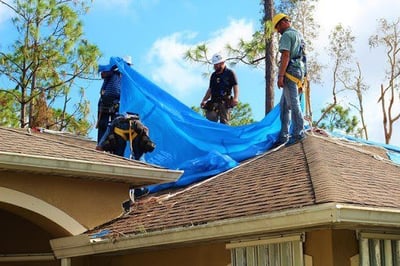
You must invest in a professional roofing contractor, and neglect the idea of a DIY project. Even if the job seems like something you can do on your own, it's not worth experimenting and racking up expensive repair costs. Which you’ll end up having to contact a roofer anyway.
Conduct Proper Maintenance
Always hire a roofer to conduct maintenance bi-annually to prevent the most common problems from occurring and damaging your home. Clearing the leaves and debris will do wonders for your roof.
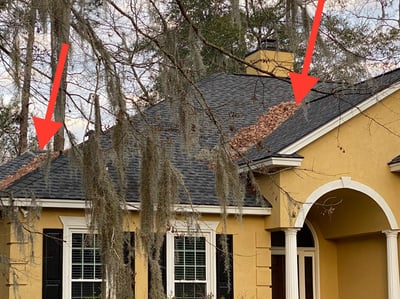
Remember that doing this allows you to remain covered for accidental damages by your insurance company. Insurance carriers can deny coverage for negligence. Stay protected!
Visual Inspections
Your roof is exposed to the elements, so make sure that you clear up any debris accumulated on it. This additional weight puts excess strain that can damage the roof. Check for any trees or overhanging branches near your roof that can potentially break and damage it. If you find any, prune them.
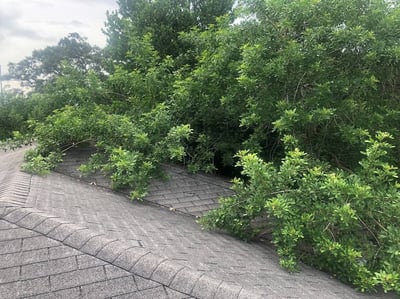
Frequently inspect for any wear and tear that may damage your roof. Damaged or missing shingles or cracks in the roof. If you come across any damage, immediately contact a roofer to repair it and prevent further damage. Keep your roof gutters clean, inspect for cracks and rust, and ensure your vents are in good condition.
Replace Your Roof on Time
Most roofs have an expected life of around 15-20 years, after which you should be planning to have a full roof replacement. While premium roofing materials like metal can last up to a century, they do require a significant upfront investment.
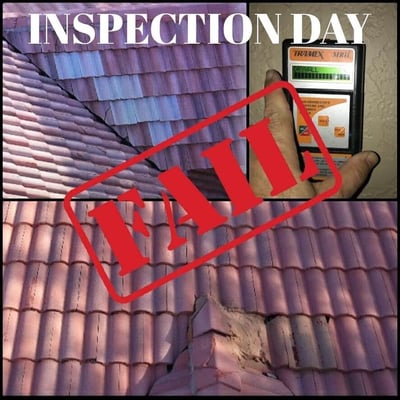
Insurance offers limited or no coverage for roofs older than 15-20 years, so if your roof leaks or collapses beyond that, you might be liable for the damages.
Should I Repair a Leak Even If It’s Small?
Yes, you should absolutely repair a leak even if it’s small. On the surface, the leak only shows you what it wants you to see. Behind the scenes is a whole different story. So, if you want to hold onto that electric dancing Santa for as long as possible, and keep Grandma recliner from water stains, get that roof leak fixed.
The Imperative of Repairing Even Minor Roof Leaks
It's a resounding yes – even a small leak in your roof warrants immediate repair. What appears as a minor inconvenience on the surface often masks more severe issues lurking beneath. Ignoring these small leaks can lead to costly repairs and damage over time.
Act on Warning Signs
If any of the signs discussed earlier in this article resonate with your current home situation, you're likely dealing with a roof leak. When it comes to roof leaks, it's always better to err on the side of caution. Delaying action could transform a small, manageable issue into a complex, expensive problem.
Seek Professional Assessment
Unsure if what you're seeing is a leak? Don't take chances. Contact a professional roofing contractor for an expert evaluation. A professional can diagnose the issue, assess the extent of the damage, and recommend the most effective course of action. This proactive approach will safeguard your home and provide peace of mind.
Ready for the Next Steps?
Now equipped with knowledge about the signs and risks of roof leaks, you should feel more confident in addressing any roofing issues. When you're ready, RoofCrafters will inspect your roof and offer expert solutions. If you need more information, our learning center is a great resource. It has helpful tips on roof maintenance and care. Remember, timely action is key in roof leak repair. It's about protecting your home today to prevent bigger problems tomorrow.
Our professionals here at RoofCrafters can help with a small roof leak or provide options for your yearly maintenance inspections. Go ahead and drop us a line on our contact page, and one of our friendly experts will reach out to you as soon as possible. If you’re not quite there yet, feel free to browse the extensive resources in our learning center and immerse yourself in all things roof leaks. You know, if that’s your thing.
My name is David Toth and I am the lead estimator in North Florida with RoofCrafters Roofing. Originally from New Brunswick, I have called Florida home for the past 47 years. I enjoy cooking along with traveling to different historical areas in Florida when I have free time.


